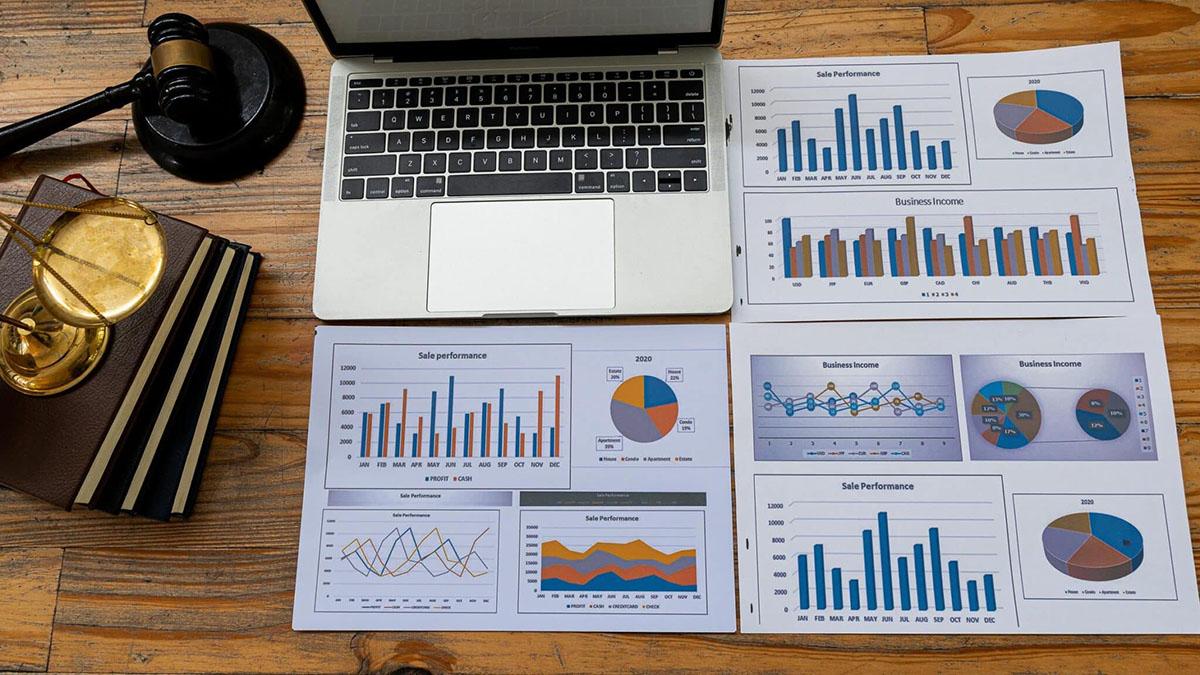While data analytics is a term typically associated with the tech industry, it has broader applications—including in the legal field. And, if you work at or operate a law firm, incorporating legal data analytics into your business can help you generate more revenue, identify better-fit clients, and run your operations more smoothly.We’ve got you covered if you’re interested in adopting this practice but aren’t sure where to start. In this post, we’ll provide insight on the purpose of legal analytics and how to introduce it to your business.
What is Legal Data Analytics?
Legal analytics is the process of analyzing raw data to uncover insights, make decisions, or identify trends specifically within the field of law. Typically, legal analytics relies on tools and technologies like statistics, machine learning, and artificial intelligence to process the data.
The Role of Data Analytics in Law

Why is having access to and analyzing legal data important? What type of benefit does it bring to your business? Below are a few ways that legal analytics adds value to your firm:
Provides valuable insights
Using legal analytics from law firm analytics software can help you uncover meaningful insights about your business, clients, and even the broader industry. Let’s say, for example, that you collect data about your firm’s financial performance. You discover that half of your clients are overdue on a payment. In response, you can create better processes around following up with people about their unpaid invoices.
Supports the decision-making process
Once you pull insights from your legal data, you can use that information to make better-informed decisions. This removes biases from the process and increases the probability that your actions will lead to more favorable outcomes.
Helps you test assumptions
It’s natural to make assumptions. But following your instincts when making important business decisions isn’t a best practice. By tapping into your law firm data, you can test your assumptions and see if your theory holds true.
How to Start Collecting Legal Data

If you want to start incorporating legal analytics at your firm, you must first identify data sources. There are two categories to consider:
Internal data
Internal data refers to any information specific to your firm. This includes data on your business and clients. Here are a few examples of internal data:
Traffic-related metrics from your website
Client intake data (i.e., location, the reason for reaching out, etc.)
Utilization rates of your lawyers
Case-related information
External data
External data refers to any information that’s found outside of your firm–whether that’s from third-party research, the government, or other law firms. Here are a few examples of internal data:
Research from third-party groups
External benchmarks, such as average case lengths
Publicly available data from other law firms
Government data (i.e., public databases that contain legal and legislative materials)
There are various ways to collect this data, and it all depends on your exact source. For some, you may have to set up specific systems, processes, and tools—whether that’s a client intake form or case analytics platform. For others, it’s just a matter of downloading a report or spreadsheet. If possible, try to pull from multiple data sources to paint the clearest picture of your law firm’s performance.
5 Common Applications of Legal Data Analytics

It may be challenging to envision how you’ll use internal and external firm analytics on a day-to-day basis at your firm. Here are five common applications for firm analytics:
1. Conduct legal research
As a lawyer, you likely conduct a lot of research on behalf of your clients. Whether getting familiar with certain statutes or reviewing former cases, you’re investing a lot of hours into this process.
If you’re looking for ways to save time, you can use legal analytics software to streamline your research. These platforms typically have a database of past cases that you can use as a reference. For instance, if you’re working on a civil litigation case in Minnesota, you can use the legal analytics software to identify other similar cases (and their outcomes) to inform your approach for your client.
Not sure where to find this type of software? The American Bar Association even provides a list of free online legal research tools that you can start with.
2. Provide predictive analytic capabilities to clients
Another potential application of data is predictive analytics. Some tools can help you predict the specific characteristics, outcomes, and potential resources spent on a case based on existing data. Let’s use an example to understand what this looks like in action:
You have a valuable client on the fence about going to trial, and they want your counsel on whether it’s worth the investment of resources. While you can’t predict the future, you can use legal analytics to give them a sense of how many hours it may take and the probability of winning the case. This information can help your client make the best decision for themselves.
3. Streamline the admin process with e-discovery analytics
Lawyers have to spend a lot of time collecting, sharing, and reviewing information with other people at the firm. This is an incredibly tedious process.
But thankfully, there’s software that can reduce the admin burden by using e-discovery. Specifically, e-discovery analytics tools allow lawyers to search for specific keywords within their documents, filter for specific date ranges, or detect trends in client data.
These functionalities simplify the process of reviewing information and save people from having to comb through all the data manually.
4. Hone marketing efforts
You can use law firm analytics software to hone your marketing strategy over time. For instance, if you have a way to collect website data, you can answer various questions, such as:
How long are people spending on the law firm’s website?
Which services do potential clients seem to be most interested in?
Is the law firm reaching its target clientele with the website?
Is the website traffic improving over time?
This data can help you make more informed decisions that will ultimately increase client lead conversions and generate more revenue.
5. Improve the efficiency of business operations
Finally, legal data analytics can be applied to improve the way you run your business. Here’s an example:
Let’s assume your business is experiencing a slight dip in revenue. To understand the cause, you analyze all the firm analytics—from every lawyer’s utilization rates to the cost of client acquisition. After running all the numbers, you realize that client retention rates are lower than in previous years. Knowing this, you can start to explore why people aren’t staying with your firm and create an action plan to prevent this from happening moving forward.
Use Legal Analytics to Boost Productivity
Data analytics in law, when utilized thoughtfully, can improve how you run your firm, interact with clients, and even approach your marketing strategy. Learn more about how MyCase Legal Analytics Software can provide useful insight for enhancing your firm’s admin processes, case research, project management, case management, and client lead conversions. Sign up for a free trial today.
About the author

Sophia LeeContent Writer
